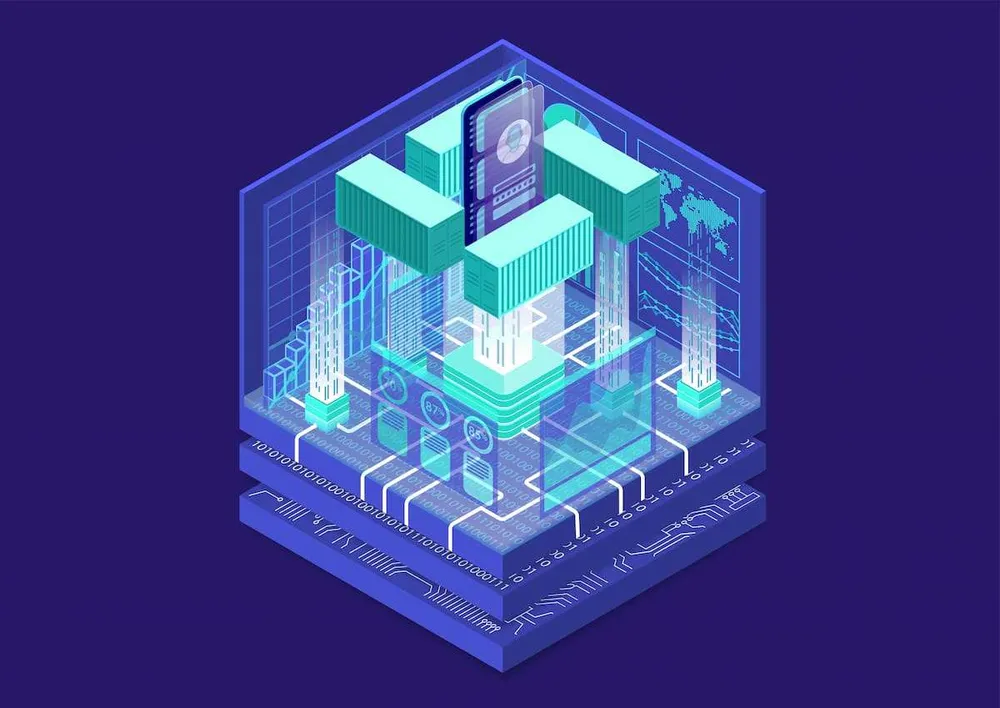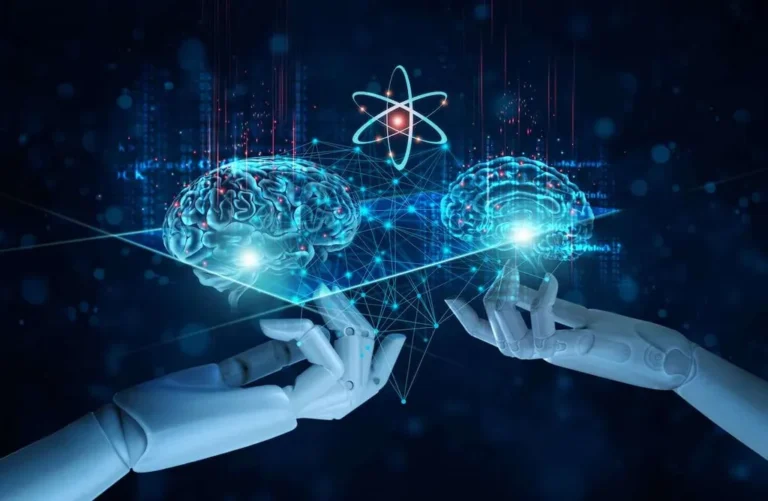Transform Your Business With AI Software Development Solutions https://www.globalcloudteam.com/ — be successful, be the first!
Enterprise Application Integration: The Potential Challenges
Happy customers are key to maximizing the worth of your enterprise utility integration project. So consider Warehouse Automation user feedback alongside the numbers to get a well-rounded picture of how the project is performing. By combining these components, you’ll be succesful of clearly reveal the optimistic impact of your EAI project on your organization. Small, unbiased services that communicate via APIs offer high scalability and adaptability in integration. Perfect for organizations seeking agility and scalability, enabling unbiased deployment and scaling of parts to assist CI/CD processes. Direct connections are established between purposes, finest suited for simple scenarios with few integrations.

What Is Enterprise Utility Integration (eai)? Eai Definition

Explore how IBM DataPower Gateway enhances safety, control and performance on your cloud and on-premises purposes. Try IBM Aspera at present and streamline your knowledge workflows with high-speed effectivity. Every EAI mannequin that has ever been developed has its particular use intent with its strengths and, of course What is Enterprise Application Integration, some limitations. However, you’ll find a way to solely get the best out of an integration solution when the implementation matches the consumer intent. With this in thoughts, the ESB model will carry out finest when utilized in an surroundings that enhances its functionality. The improved version of the Hubs-and-Spokes system is an architectural mannequin called the Enterprise Service Bus (ESB) or simply the bus mannequin.
What Is Enterprise Application Integration (eai) And Why Is It So Important?
The platform’s flexibility also makes it simple to add, remove or replace purposes or services with out impacting productiveness or requiring large-scale system redesigns. An EAI platform operates like a type of middleware that connects the disparate techniques together. The platform could be carried out without reprogramming the collaborating techniques or altering them in any vital way. The construction of EAI methods is an integration of several software functions providing totally different functionalities to facilitate the day-to-day actions of companies. The EAI is a system that basically optimizes operational efficiency in each facet of an organization, encourages progress, and fully transforms a enterprise. It fosters better decision-making, enhances the customer experience, and will increase business agility, all components that contribute to long-term success.
Barriers To Effective Eai And Implementation Pitfalls
It can be necessary to supply coaching and assist to make sure the total capabilities of the built-in purposes are used. To streamline the process, the units are linked to different techniques that management the manufacturing surroundings, and all applications are built-in into the enterprise software. This provides entry to real-time data and provides useful insights that help mitigate problems and optimize productions. Enterprise Application Integration (EAI) stands on the forefront of digital transformation, offering a pathway for companies to attain seamless interconnectivity and operational excellence. As we’ve explored, the implementation of EAI comes with its distinctive set of challenges, however the benefits it offers in phrases of tailored options, scalability, and long-term cost-effectiveness are unparalleled.
Suitable for small companies with a restricted number of functions to combine, the place managing individual connections is possible. The neatest thing about middleware is that it offers you with lots of options to select from. The commonest sorts embrace transaction processing screens, message brokers, application-server middleware, message-oriented middleware, and extra. The middleware helps within the creation of a connection pool and allows customers to entry backend knowledge sooner. Middleware is a mannequin that acts as a connective tissue between users, data, and functions. It enables the builders to effectively construct and deploy purposes.
This means your workers are lacking data that would assist them carry out their job just because they can’t entry it. As a end result, their efficiency falters, and the experiences of your customers and prospects additionally worsen. Upload any project or business-related files that can assist us collaborate successfully. The new software also comes with developments that lack in the old software.
If you need extra information about knowledge integration and the means to use it, please contact us. To implement knowledge integration in EAI, the Extract, Transform, Load (ETL) process and Enterprise Data Warehousing are key. ETL unifies data by extracting it from diversified sources, remodeling it for consistency, and loading it right into a central repository. Meanwhile, Enterprise Data Warehousing stores this integrated knowledge, supporting advanced analyses. Together, they create a robust framework for seamless information integration and strategic decision-making.

The major aims of EAI are to facilitate seamless information move, enhance real-time information access, get rid of operational silos, and allow scalable integrations amongst completely different business applications. Enterprise Application Integration (EAI) represents a process for streamlining and enhancing the connectivity and communication between varied software program functions inside an organizational ecosystem. In essence, EAI is the spine that allows disparate methods to work cohesively, fostering a more built-in, environment friendly, and agile business operation.
When data and knowledge are available, the ability to perform tasks is enhanced. The EAI allows the techniques and software from various departments to mechanically change data and supply it in good time. So, in case you are seeking an skilled group for your enterprise utility integration, partner with eSparkBiz and boost the effectivity of your small business. Service-oriented architecture or SOA is an approach in which the software program assets of an enterprise turn into discoverable on completely different services and networks. Each of the services is designed to realize a particular objective and carry out completely different work items. Tibco is one other popular enterprise utility integration device that’s loaded with several tech-savvy options.
Companies can integrate one system with one other by way of many alternative methods, together with messaging protocols, middleware, or database replication. EDI ModernizationModernization of legacy B2B estate to an Autonomous Supply Chain (ASC) means of working that may drive effectivity and accuracy within the B2B partner resolution. Veeam just lately hosted a webinar highlighting the migration strategies and roadblocks to avoid when utilizing containers for utility growth and mobility, test it out.
Different departments in a big enterprise use completely different functions for tasks like payroll administration, enterprise useful resource planning, and customer relationship administration. It may find yourself in knowledge silos as different purposes capture different information features of the identical entity. Enterprise application integration helps knowledge synchronization so organizations can automate business processes and improve productivity.
- Therefore, choosing the proper one for your business is usually a little complicated.
- For instance, when a customer locations an order on an e-commerce web site, EAI can routinely update the inventory administration system, set off the achievement course of, and ship a confirmation e mail to the client.
- But as the number of functions increases, the originally simple system begins to get very complex and more difficult to maintain, with upkeep cost rapidly turning into unbearably high.
- However, fashionable ESB models take care of this problem by leveraging microservices where each integration element has an independent process.
Looking to the longer term, EAI is ready to become even more integral to enterprise operations. The growing reliance on knowledge and the necessity for agile, responsive business processes will drive additional developments in EAI. We can expect to see more subtle integration methods, incorporating cutting-edge applied sciences, and methodologies. This ongoing evolution will propel companies toward greater operational effectivity, agility, and a stronger competitive place.
In today’s fast-paced business surroundings, organizations rely on a mess of software functions to streamline their operations and improve productiveness. However, these applications typically function in isolation, resulting in knowledge silos and inefficient processes. This is the place enterprise utility integration (EAI) comes into play. EAI involves connecting an organization’s enterprise applications, companies, databases, and methods within a unified framework to enhance communication and interoperability. An EAI platform permits the seamless trade of knowledge, while automating business processes and workflows. The platform ensures that the group uses its data consistently and that adjustments to knowledge by one system are accurately reflected within the different systems.
